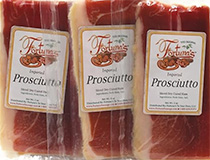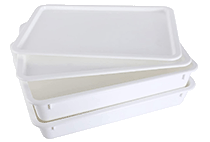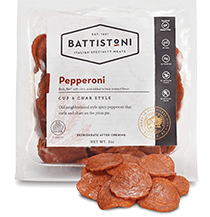We all know pizza is Italian. It came from Naples and arrived in the U.S. in the early 20th century. But many don’t know that Italian pizza has some differences from its American counterpart. In Italy, thin-crust pizza is the norm, and you won’t find stuffed crust or tons of toppings on pizza.
If you’re in Naples, chances are you will be introduced to Neapolitan pizza, but in other parts of Italy, you will find a thin-crust pizza with few toppings, and it will be served uncut. You won’t find any dipping sauces on the table, but you may find some flavored olive oil or hot sauce.
You definitely won’t find any pepperoni or Hawaiian pizza, but you will come across some classic Italian pizzas that everyone should know. We are going to explore five popular pizzas we’ve actually tried in Italy and teach you how to make classic Italian pizzas so you can be one step closer to a true home pizzaiolo.
Key Takeaways:
- Italian pizza differs from its American counterpart, with thin-crust pizza being the norm and fewer toppings.
- There are five popular classic Italian pizzas: Quattro Formaggio, Capricciossa, Quattro Stagione, Mar e Monti, and Proscuitto y fungi.
- The key to making classic Italian pizzas is to use authentic high-quality ingredients and experiment with different toppings and combinations.
Table of Contents
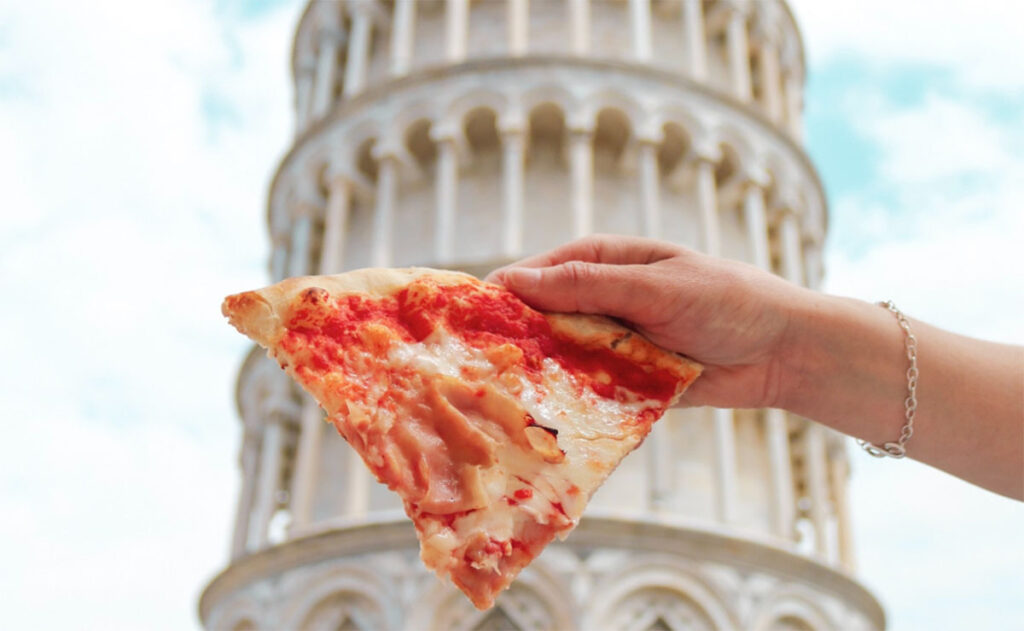
Classic Italian Pizzas
These five pizzas are found throughout Italy (not in Poland) and sometimes in pizzerias in the U.S. All of the ingredients you can find at a supermarket, Italian deli, international store, or online.
Quattro Formaggio Pizza
Quattro Formaggio translates to “four-cheese” pizza. We think it’s a no-brainer: if one cheese is good on pizza, then you better believe four cheeses will make it even better. Quattro Formaggio is a classic Italian pizza that comes from the Lazio region.
Traditionally, Quattro Formaggio has four kinds of cheese: creamy mozzarella, tangy Gorgonzola, nutty Parmigiano Reggiano, and buttery Fontina. But like most recipes in Italy, it changes throughout the region and uses local cheeses and mixes and matches other cheeses.
In this pizza, the cheese is the star player, the sauce, either red or white, and the crust are supporting players of this decadent pizza.
We love the classic four cheese but have experimented with other cheeses. One amazing four-cheese ensemble is ricotta, Asiago, caciocavallo, and Pecorino. Another great combo is homemade fresh mozzarella, smoked Gouda, blue cheese, and Spanish Manchego.
The key to choosing four cheeses that work together is to think about texture and intensity of flavor, and then the combinations are endless.
Pro Tip: Drizzle hot honey over a Quattro Formaggio for an amazing pizza experience.
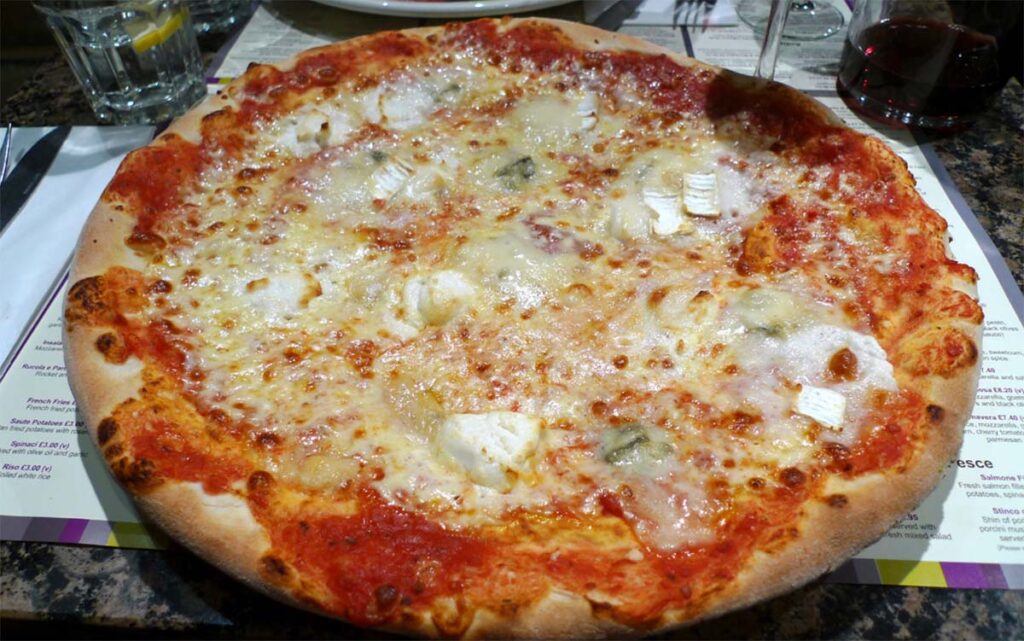
Capricciossa Pizza
Capricciosa translates to “capricious,” and the nature of the pizza is just as playful as the name suggests. Traditionally, this pizza is topped with cooked ham, mushrooms, artichokes, and tomatoes. In some regions, it has hard-boiled eggs, anchovies, olives, and sausage.
Some version of capricciosa is found at every pizzeria in Italy. The pizza is thought to have originally been sort of a “clean out the fridge” and make pizza type of recipe because of the flexibility of ingredients. Due to this, the pizza is seen as more utilitarian than gourmet.
Recently, in Italy, the capricciosa has seen a comeback, and modern chefs are elevating it with high-quality ingredients. Aged salami is replacing slices of pork shoulder, roasted artichokes soaked in a house marinade are replacing canned artichokes, foraged wild mushrooms are replacing tinned, and local cheeses are added to tie the whole thing together.
We love a good capriccioso pizza and respect its humble origin story. In our house, we do a weekly fridge clean out, and we often make a version of capricciosa. When you make it at home, feel free to sub ingredients for a truly personalized capricciosa pizza.
Pro Tip: Don’t be afraid to try new topping combinations.
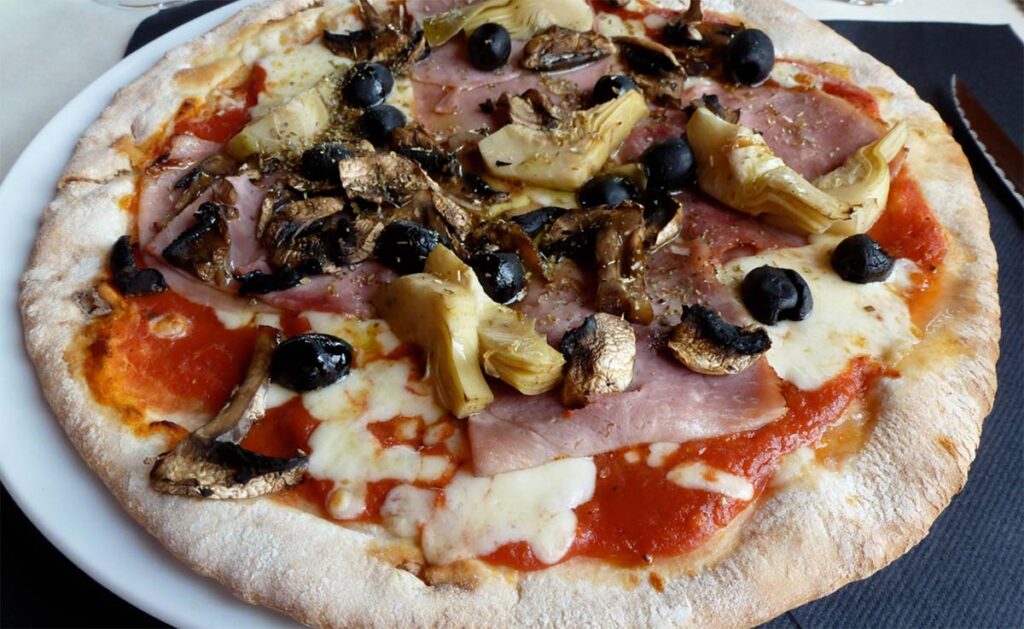
Quattro Stagione Pizza
Quattro Stagione translates to “four seasons,” and this pizza pays homage to all four seasons. The pizza is divided into four quadrants, and each has toppings of that season. Summer is represented by tomatoes and basil, fall with mushrooms, winter with ham and olives, and spring with artichokes.
The interesting thing about this pizza is that each section is divided, so if you are sharing a pie, you might have some squabbles over who gets which slice. But remember, in Italy, the pizza crust has a thin crust, and it’s normal for one person to order a pizza just for themselves.
We like to reinvent the Quattro Stagione with our own local ingredients that match the seasons. It’s a fun game to see the incredibly different topping combinations for summer thinly sliced zucchini, fall Swiss chard, winter roasted butternut squash, and spring pizza asparagus and green onions.
Another fun idea is if you are having a pizza night with friends, make four pizzas, one for each season, and use seasonal vegetables for a Quattro Stagione pizza party.
Pro Tip: Visit your local farmers market for the freshest seasonal ingredients in your area.

Mar e Monti Pizza
In Italian, mar e monti translates to the “sea and the mountains” more colloquially “surf and turf.” And this pizza blends the salty taste of the sea with the hearty flavor of the mountains. The classic Italian pizza is traditionally made with shrimp representing the sea and mushrooms representing the mountains.
However, regional variations call for many different ingredients as long as one represents the sea and one the mountains.
In Southern Italy, a mar e monti might have anchovies and eggplant, while in the coastal north, a mar e monti might have grilled octopus and arugula. We have made this pizza the traditional way, but also like to play with different ingredients.
While we love seafood pizza, we like how the mix of veggies and briny seafood work together on a pizza. If you want to recreate a mar e monti try capers and fresh tuna. Or try adding bright peppers and mussels.
Pro Tip: Find a fishmonger in your area for the best fish.
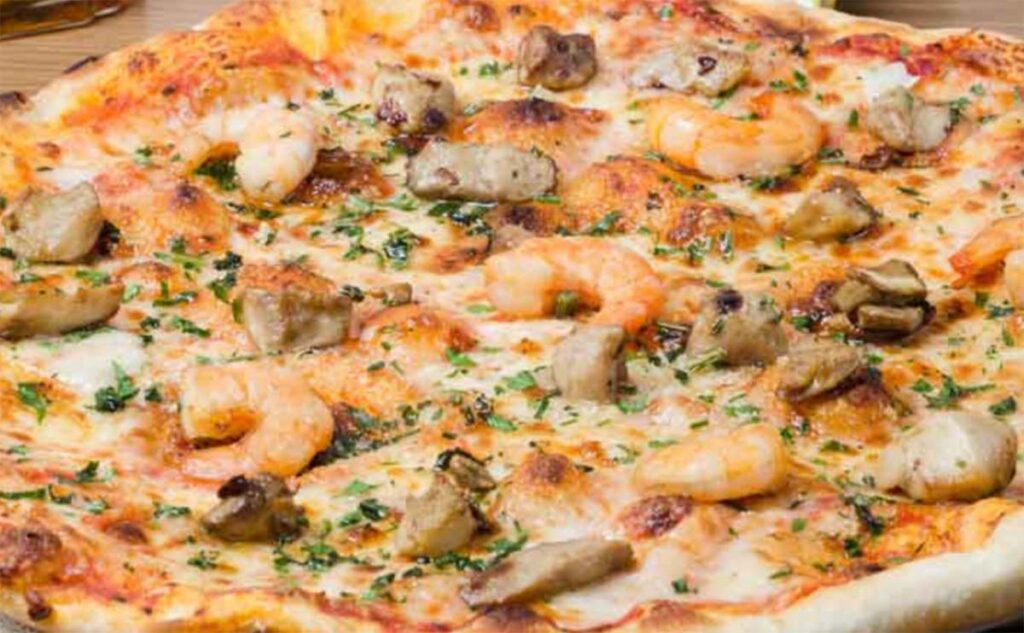
Prosciutto e Fungi
This tasty two-ingredient pizza seems too boring to even recommend, but there is more to it than just these two ingredients. Prosciutto means ham, and fungi is mushrooms. So, while this pizza seems simple, it has other possibilities.
It can be made with prosciutto cotto, which means cooked ham similar to Canadian bacon or deli ham. Or prosciutto crudo, which is a cured form of ham. And mushrooms can be foraged or store-bought. Meaty portobello, white button, crimini, chanterelles, and morels are all possibilities on this pizza.
We like mixing it up and using two types of ham, like guanciale and mortadella, and two kinds of mushrooms for our prosciutto e fungi. Sometimes, we even add caramelized onions for extra goodness.
Pro Tip: Make it with a white sauce instead of red for a real treat.
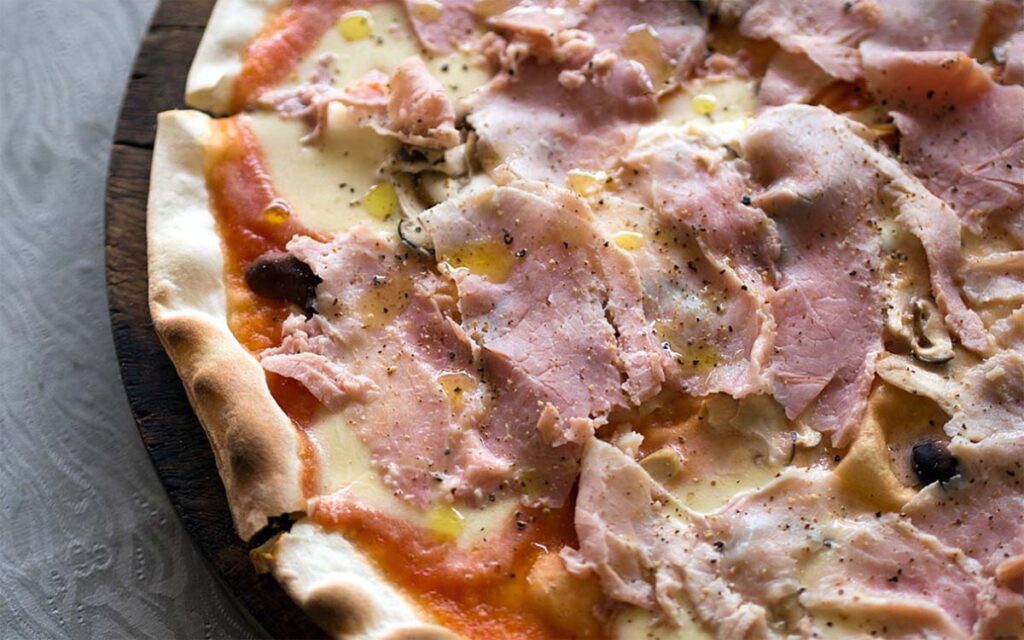
In conclusion, making classic Italian pizzas at home is a fun and rewarding experience for any pizza lover. By following these simple steps and using quality ingredients, you can create delicious pizzas that rival those from your favorite pizzeria.
Whether you prefer a classic Margherita or a more adventurous topping combination, the possibilities are endless. So why not give it a try and impress your family and friends on pizza night?
Have you tried to make classic Italian pizzas at your home before? Which is your favorite?

